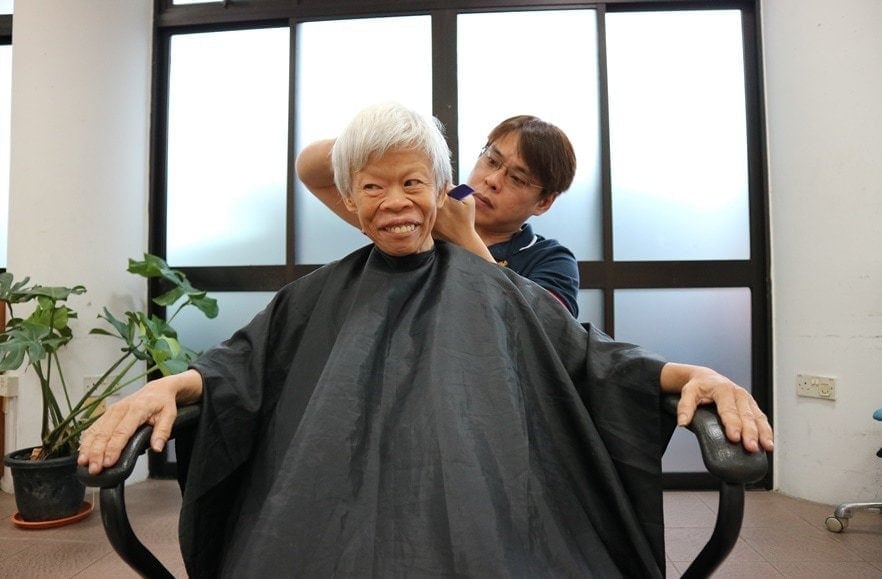A personal mobility device (PMD) allows its user to have greater independence and increased mobility and even speed within the community. It is no wonder then that there has been an increase in demand for these devices, which include powered scooters and wheelchairs. SPD physiotherapist Nadiah Binte Muhamed Amin advises on the safe and proper use of these mobility devices.
A 2015 study in the United States suggests that road traffic accidents involving pedestrians using wheelchairs are a third more likely to be fatal than those involving the general public. Despite the lack of statistics collected in our society, the Government recognises the risks faced by people with disabilities whilst commuting.
In April 2016, the Transport Ministry accepted the Rules and Code of Conduct proposed by the Active Mobility Advisory Panel aimed at inculcating safer practices amongst all PMD users. The Land Transport Authority (LTA) website provides a comprehensive look at the Rules and Code of Conduct that apply to PMD users.
While the Government plays a significant role in introducing these safety guidelines, either through law enforcement or public education, everyone must still share equal responsibility in creating an environment that is not only accessible, but also safe.
For PMD users, it is important to practise PARA.
Plan Ahead
– Plan your journey ahead.
– Always ensure that your PMD is in good working condition. Check your tyres, brakes and lights before setting out on your journey.
– Look out for shared pedestrian walkways or cycling paths, pedestrian crossings, ramps and lifts that can be utilised.
– Refrain from using your PMD on roads, sand or grass.
– Do not use your PMD on steep slopes or kerbs greater than 50mm in height.
– If possible, avoid routes that require you to travel on uneven ground, such as construction sites.
Do consider
– The time you are travelling at – Expect the roads to be busier during peak periods and public transport like buses and trains to be packed with commuters going to work or going home leaving no space for persons using PMDs. At nights, expect reduced visibility.
– Rainy weather – It is not advisable to use a PMD in the rain. Heavy rain also reduces visibility. Wet pavements or roads are slippery and can increase risk of skidding and collision.
Tips
– Schedule your appointments during non-peak hours
– Wear bright coloured clothing
– Paste reflective tape on your PMD to be easily seen by others
– Always have a raincoat ready in the event of rain, preferably one that is brightly-coloured
– Take note of sheltered areas along your route in case of heavy rain
Stay Alert
– Stay focused on your surroundings when using your PMD. Keep a look-out for other road users and obstacles.
– Never use your phone whilst using your PMD as it may distract you. If you need to use your phone urgently, park by the side of the pavement where you can be easily spotted by others.
– Never use you PMD when you are fatigued, unwell, or are on medication that may cause drowsiness or loss of concentration. As much as possible, ensure that you have adequate rest prior to embarking on your journey.
Act Responsibly
– Avoid doing anything that would compromise your safety and the safety of others.
– Never drink and use your PMD at the same time. Alcohol decreases your concentration and slows down your reaction time.
– Never speed. Although the maximum speed for most PMDs is at 10km/h, do slow down and be prepared to stop when:
i) Travelling on wet pavements or on uneven surfaces
ii) Approaching crowded areas like bus stops
iii) Negotiating a bend
iv) Going in reverse
v) Travelling in a crowded area
– Avoid weaving through people. Instead, give way to other pedestrians.
Anticipate Dangers
– When using the PMD, always anticipate possible dangers that may arise. Never assume that other road users and pedestrians are looking out for you.
– Slow down when approaching danger areas, such as:
i) Pedestrian crossings
ii) Intersections
iii) Bends, where there is limited sight distance
– Prior to crossing roads, ensure that on-coming tall vehicles have seen you and stopped for you. Consider the following situations:

In these situations, the driver of the red car may not notice you. This risk is even greater with bigger vehicles.
– Keep a safe distance between others and yourself.
It is also important to prepare how you should react in the event of an emergency. Please refer to the list of emergency contact numbers below:
| Service | Telephone |
| Police | 999 |
| Fire & Ambulance | 995 |
| Non-Emergency Ambulance | 1777 |
| Police Hotline | 1800 255 0000 (non emergencies) |





